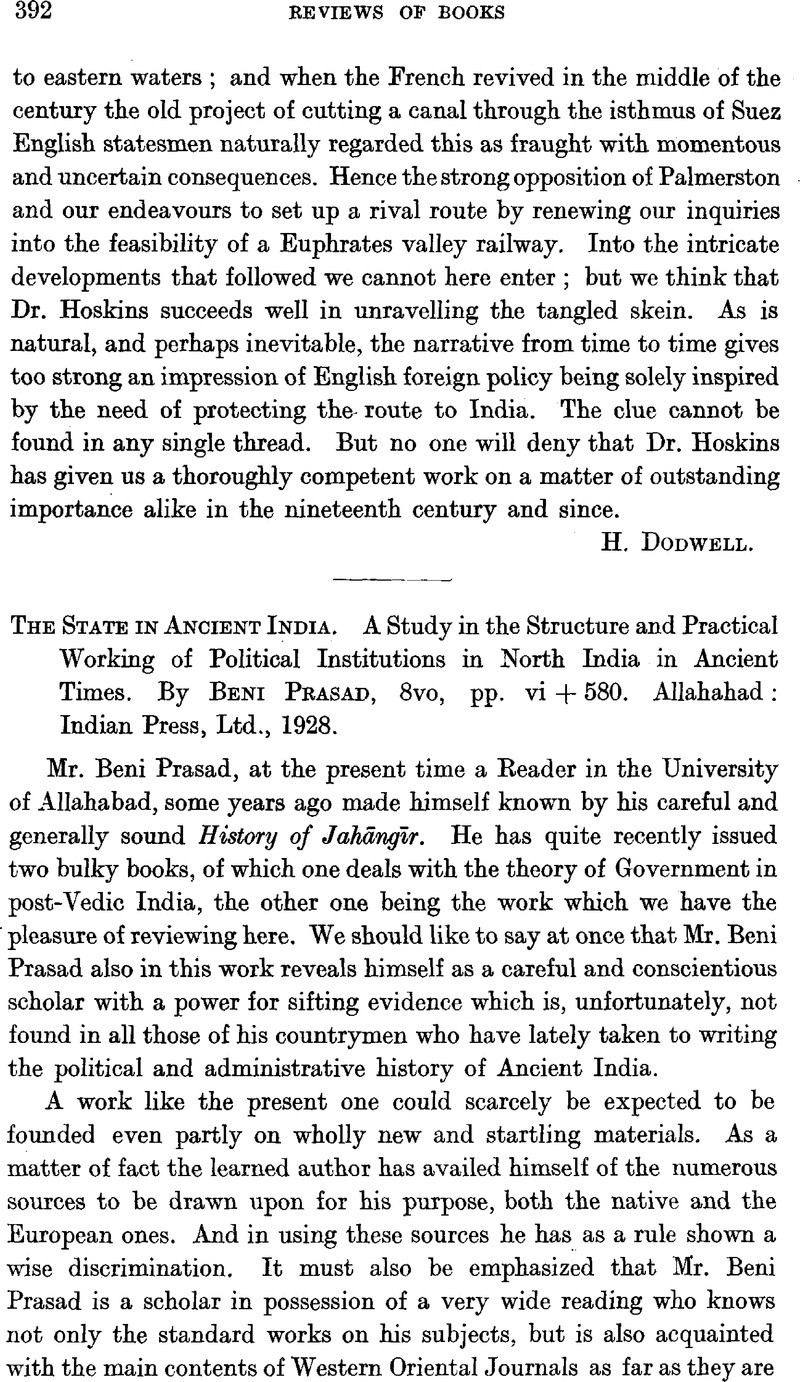No CrossRef data available.
Article contents
The State in Ancient India. A Study in the Structure and Practical Working of Political Institutions in North India in Ancient Times. By Prasad Beni, 8vo, pp. vi + 580. Allahahad: Indian Press Ltd., 1928.
Published online by Cambridge University Press: 24 December 2009
Abstract

- Type
- Reviews of Books
- Information
- Bulletin of the School of Oriental and African Studies , Volume 5 , Issue 2 , June 1929 , pp. 392 - 395
- Copyright
- Copyright © School of Oriental and African Studies 1929
References
page 393 note 1 Cf. thisBulletin, 4, 167.Google Scholar
page 393 note 2 Mr. Beni Prasad apparently attributes iv, 42, 1, to Varuṇa, but iv, 42, 3, to Trasadasyu. According to the native tradition, iv, 42, 1–6 are the ātmastuti of Trasadasyu which is, however, impossible. Cf. my remarks in Die Suparṇasage, p. 96 sqq.
page 394 note 1 cf.Thomas, Professor, JRAS. 1914, p. 391 sq.Google Scholar, and Hultzsch, , Inscriptions of Aśoka, p. 167, n. 3.Google Scholar
page 395 note 1 cf.Lassen, , Ind. Altertumsk., 2, 185 sq.Google Scholar; CHI. 1, p. 377.Google Scholar
page 395 note 2 The counter-arguments of Professor Keith (IA. 52, 59 sq.)Google Scholar, as usual, are no arguments at all, as they simply consist in denying evidence without adducing other that proves something to the contrary. Thus, when I find in Śiśupālavadha, i, 47, an imitation of an expression in the final verse of the MudraraksasaGoogle Scholar, Professor Keith finds that Visakhadatta has instead imitated Magha, etc.




